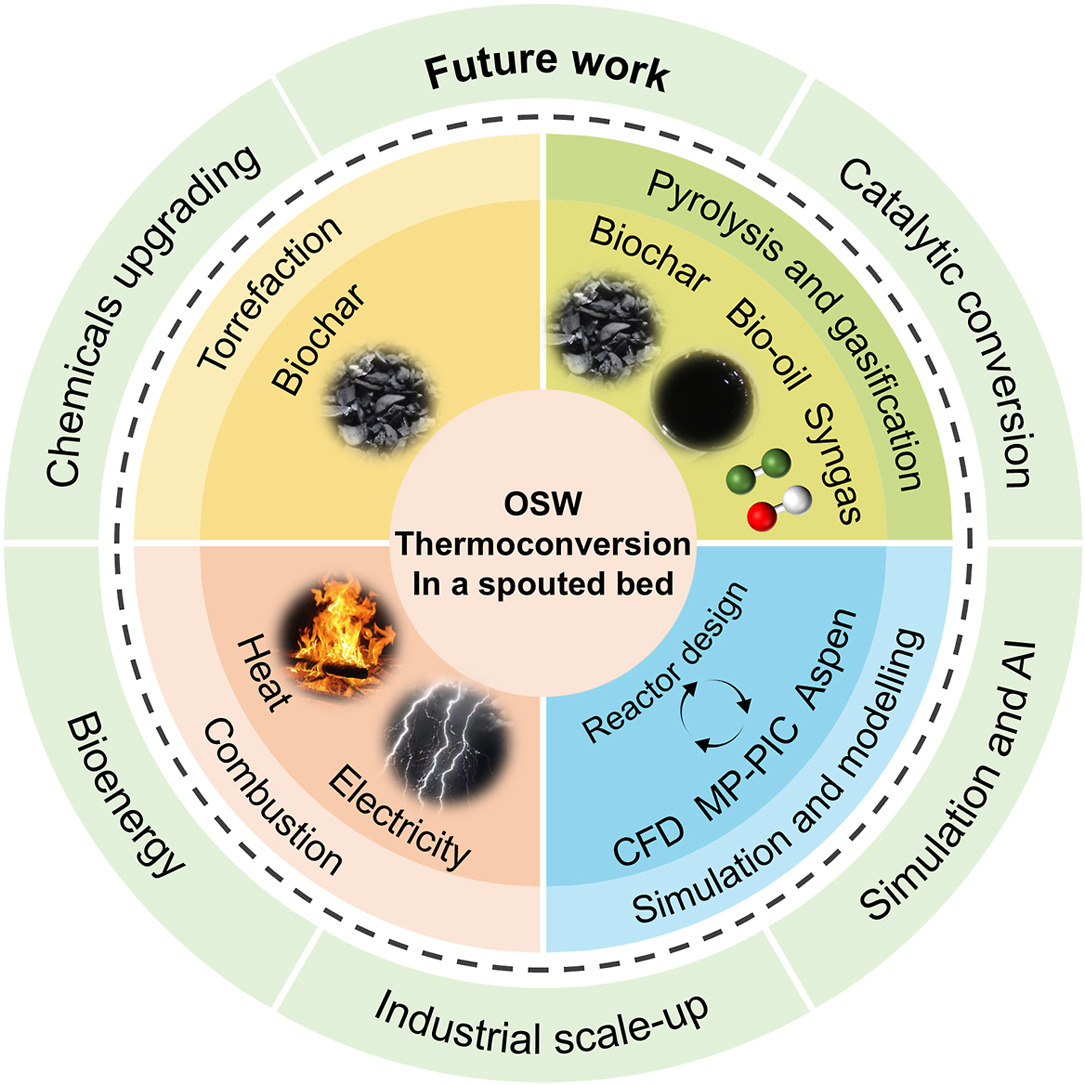• Recent progresses in thermoconversion in spouted beds are reviewed.
• Spouted beds are well suitable for torrefaction, pyrolysis, gasification, and combustion of OSW.
• Catalytic thermoconversion shows promise for OSW valorization.
• Large-scale valorization of OSW using spouted bed is still very limited.
Valorization of organic solid waste (OSW) is a promising avenue for the production of value-added products and renewable energy sources. This paper offers an exhaustive review of the thermochemical conversion processes in spouted bed reactors, which yield products like biochar, bio-oil, and syngas, as well as energy forms such as heat and electricity. While numerous studies have been conducted on thermoconversion in spouted beds, there is a scarcity of systematic reviews on this topic. This paper underscores the importance of spouted beds in torrefaction, pyrolysis, and gasification, drawing on both experimental and simulation perspectives. By focusing on reactor design, reaction condition optimization, and catalyst enhancement, OSW can be more efficiently transformed into valuable products and bioenergy. Furthermore, the integration of simulation and modeling offers profound insights into the intricate reactions that occur during thermal conversion. Current simulation studies in spouted bed reactors are primarily centered around reaction kinetics, Computational Fluid Dynamics (CFD) modeling, the Multiphase Particle-In-Cell (MP-PIC) approach, and process simulation. The future integration of Artificial Intelligence (AI) is anticipated to enhance parameter optimization with greater precision and facilitate industrial scale-up. The paper concludes with a synthesis and contemplation of the prospective advancements in spouted bed technology.

